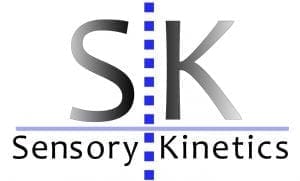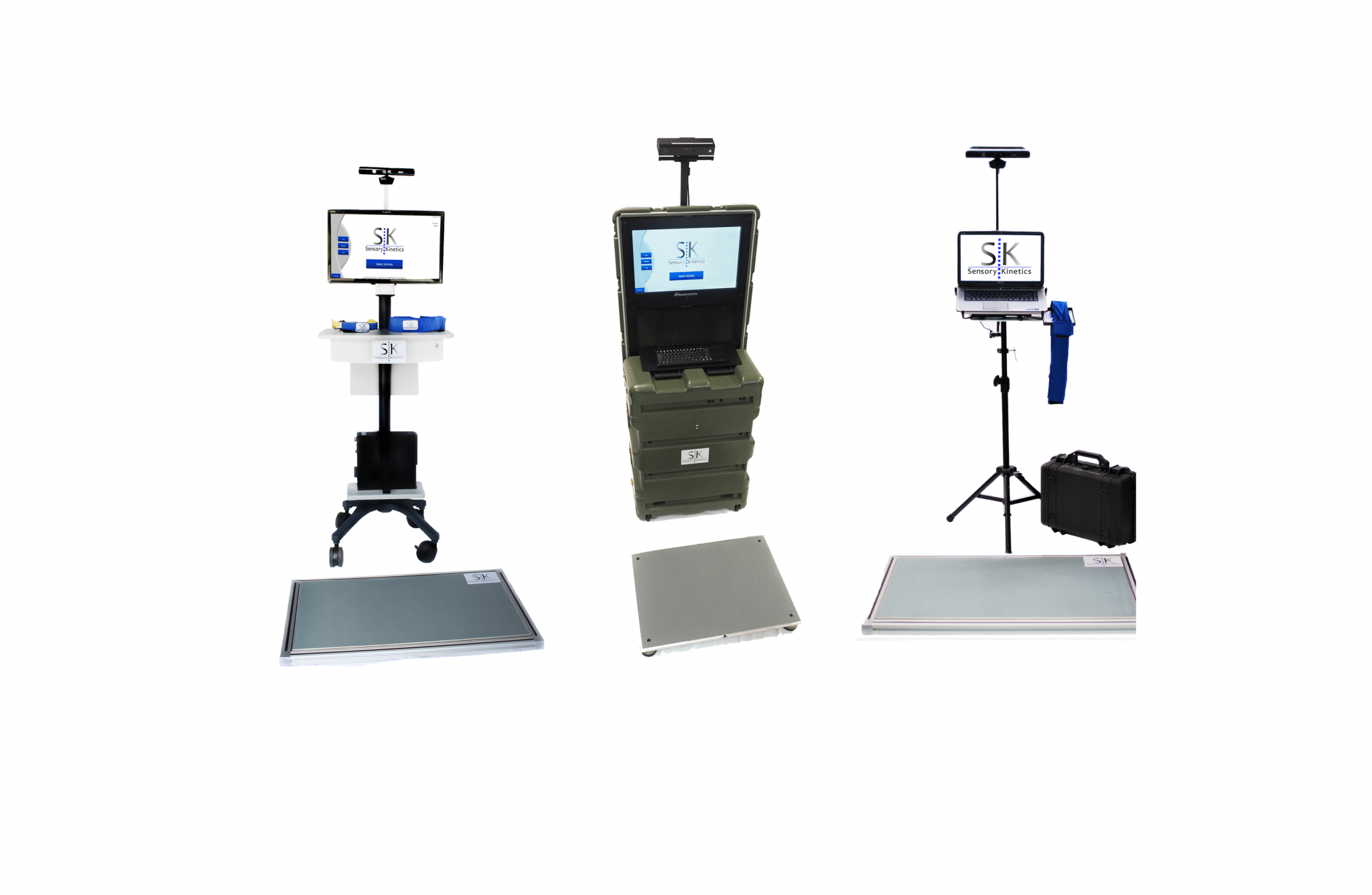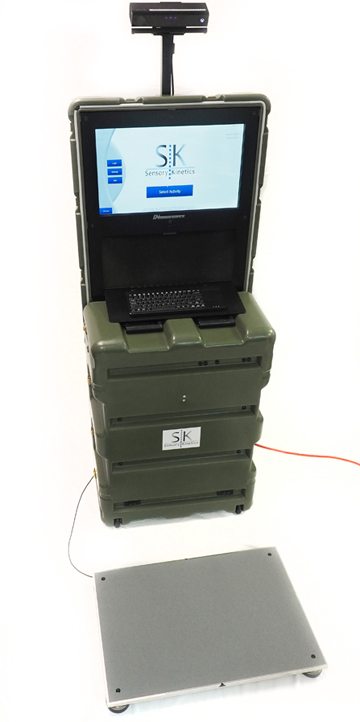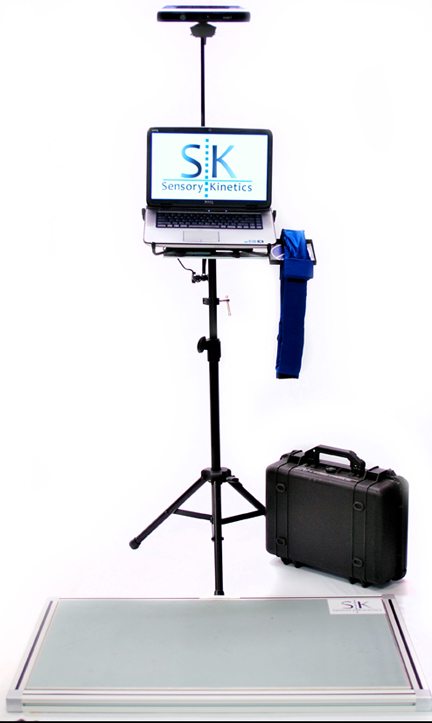
The Balance Problem
- Motor and balance control dysfunction are often associated with aging, stroke, mild traumatic brain injury (mTBI), concussion, neurological disorders and disease.
- Balance problems can range from minor vertigo events to debilitating problems that greatly affect quality of life.
- A consequence of balance deficit is falls. More than one-third of adults over age 65 fall each year and they account for about 2 million emergency department visits.
- The CDC estimates that by 2020, falls may cost the nation $43.8 billion in direct and indirect costs. Falls are also deadly – every 35 minutes an older American dies as the result of a fall.
- Falls may be preventable: The AARP suggests balance training as one of four areas of exercise essential to staying healthy and independent as a senior.
- Dizziness and vertigo are also associated with nearly all reported studies of blast related TBI and are a significant and functionally limiting component of the overall disability.
Current Treatment Approaches
- Assessment of fall risk is difficult. Measures are often “surrogates” and are not good predictors of falls.
- Current intervention strategies include combinations of medical, surgical, education and rehabilitation options.
- In many cases, remedial physiotherapy (PT) is an effective treatment, but it is time consuming and patient specific, and standards of care are variable.
- In spite of considerable fall intervention programs, the rate of fall occurrence has not decreased.
Sensory Kinetics Balance Rehabilitation Demonstration
The Sensory Kinetics Approach
The Sensory Kinetics Vestibular Rehabilitation and Balance Training system can assist Physical Therapists in the training and rehabilitation of patients with balance deficits. The system provides continuous, real-time sensory feedback in the form of body referenced tactile cues to augment the human balance control system. The tactile cueing may be applied independently or in combination with visual and audible feedback. The system hardware and therapy protocols integrates seamlessly with current physical therapy workflow, and is scalable and configurable for patient needs.
Engineering Acoustics, Inc. (EAI) has been involved in the development, manufacture and application of vibrotactile transducers (tactors) and related systems since 1995. We have provided components, systems, software, and consulting services to a multitude of military, research, biomedical and commercial organizations in the US and abroad. In fact, a significant amount of published research in the tactile field describes experimentation using EAI’s C-2 tactors, which has become a research “standard” in the field. EAI’s personnel have presented various papers on the subject1, and have supported a number of researchers developing applications in automotive, entertainment , biomedical and navigation / communication fields.
We have spent many years applying tactile technology to improving Situational Awareness (SA) for the military. This has led to the development of:
- Tactile Situational Awareness System (TSAS), an advanced flight instrument that uses the sensory channel of touch to provide situational awareness information to pilots.
- NavCom, a system utilizing intuitive tactile cues to provide navigation, communication and spatial orientation information to soldiers. Based on this technology, EAI developed the Sensory Kinetics system on the premise that the key to vestibular rehabilitation is to provide intuitive, instantaneous, continuous motion orientated feedback during a progression of functional tasks and activities.
Clinical Studies
We are currently completing a multi-site controlled study comparing clinical and device measured outcomes between a conventional care group and a group treated with our system (as an adjunct). This research is being conducted at the Rehabilitation Institute of Chicago and Good Shepherd Rehabilitation Hospital in Allentown PA.

References:
1.Bruce J. P. Mortimer, Gary A. Zets, and Roger W. Cholewiak, “Vibrotactile transduction and transducers” Journal of the Acoustic Society of America. 121 (5):2970-2977, May 2007.
-B Mortimer, “An itch that needs scratching, Applications of Vibrotactile Technology”, Invited lecture at the Neuromorphic Engineering Workshop, Telluride, July 2009.
-Mortimer B, Zets G, Tactile Symbology: Development and Application, 54th Annual Meeting of the Human Factors and Ergonomics Society September 27-October 1, 2010
-Mortimer B, Zets G, Mort G and Shovan C, Implementing Effective Tactile Symbology for Orientation and Navigation, 14th International Conference on Human Computer Interaction, HCI (2011)
Overview
Control of balance depends on postural orientation and is accomplished at a reflex level (without you noticing). It depends on a complex interaction between the sensory, muscular, and nervous systems – known as sensory integration. Various sources of sensory information are integrated to form an internal model of the body that our central nervous system (CNS) uses to plan and execute motor behaviors. The human sensory system is capable of adaptation so, for example, if the balance organs (inner ear) are not functioning properly, the sensory system can compensate by relying more on the visual system. This principle is known as brain plasticity.
Benefits of tactile feedback
Think of getting tapped on a shoulder – you will automatically turn towards the side you are tapped, even if you are involved in some other activity. You do not need to be listening to, or looking at something to get this “message”– this is an instinctive response that does not require any significant cognitive resources. Thus tactile feedback is very intuitive. We can also use tactile cues to indicate postural movements and sway. This feedback is immediate (there is virtually no delay) and can form part of the natural sensory integration control loop (postural actions result in tactile cues).
We believe that the key to vestibular rehabilitation is to provide intuitive, instantaneous, continuous motion orientated tactile feedback during a progression of functional tasks and activities.
Some scientific reasons why tactile cueing is uniquely suited to this task:
- The sense of touch is intrinsically linked with the neuro-motor channel, both at the reflex and higher cognitive regions, which makes it intuitively tied to orientation and localization.
- Research has demonstrated that tactile cueing can yield significantly faster and more accurate performance than comparable spatial auditory cues.
- Traditional visual and audio feedback during postural tasks requires cognitive attention (i.e. concentration), and can be misinterpreted.
- Sensory integration is able to rapidly use additional tactile/proprioceptive information and there is some research evidence confirming transference of skills and retention (brain plasticity).
How do we apply tactile feedback in the Sensory Kinetics system?
The Sensory Kinetics balance rehabilitation system uses a combination of sensors to measure the postural movements of a participant and provides tactile feedback during various therapeutic tasks. A small belt containing a number of tactors is worn over the torso. Depending on the activity and the therapist defined settings, tactile vibration in a sector of the belt is designed to correspond to postural directional cue. Tactile feedback can be used to teach postural tasks, refine postural strategies and even to practice movements.
What are the benefits of adding multi-sensory feedback?
Visual displays are well suited to learning new tasks. We combine multiple sources of information to strengthen decisions. Our approach allows a therapist to configure the kind of feedback needed. Tactile feedback may also be used in complex tasks where the other senses are busy.
he Sensory Kinetics Vestibular Rehabilitation and Balance Training system has been developed to potentially address the needs of the following patient groups:
Aged: Although falling represents a general risk to all humans, the elderly are more prone to falls. Approximately 1/3 of people over age 65 fall each year(1), and fall-related events are the leading cause of injury deaths among people 65 years and older.
Stroke: Nearly 795,000 Americans experience a stroke each year and about 40% of stroke survivors experience moderate to severe functional impairments that are often neurological and balance related.
Dizziness/Vertigo: More than two million people per year visit their doctor for vestibular / balance disorders(2); it is the ninth most common complaint that leads patients to visit physicians; over 63% reported experiencing symptoms over a period greater than three months(3).
Head Trauma: Mild to severe head trauma is a leading risk factor for dizziness and balance dysfunction(4). Between 400,000-500,000 Americans suffer serious head injuries annually(5); a majority of these individuals complain of dizziness for up to five years following the injury.
Military: The wars in Iraq and Afghanistan have resulted in over a quarter million (360,000) brain injured U.S. veterans, and approximately 45,000 to 90,000 of these experience persistent symptoms and may need long term care. Overt symptoms may include balance6 and spatial disorientation problems (vertigo) related to vestibular dysfunction, vision disturbances, inner-ear edema, and/or other sensory integration deficits
Sensory Kinetics is developing technological interventions aimed at assisting these population groups to reduce or delay the occurrence of falls, and improve balance and locomotion, and hence quality for patients.
PLEASE NOTE: The SK system described on this web site is an Investigational Device and its use remains limited by U.S. Federal Law to investigational uses only. We make no representation regarding the device safety or efficacy for the patient populations represented below. Research is ongoing.
References:
1. Rawsky E. 1998. Review of the literature on falls among the elderly. Image Journal of Nursing Scholars 30: 47-52
2. http://www.medicinenet.com/vestibular_balance_disorders/article.html
3. Kroenke K, Lucas CA, Rosenberg ML, Scherokman B, Herbers J, Wehrle PA, Boggi, JO. (1992). Causes of persistent dizziness: A prospective study of 100 patients in ambulatory care. Annals of Internal Medicine 117(11):898-929.
4. Basford JR, Chou LS, Kaufman KR, Brey RH, Walker A, Malec JF, Moessner AM, Brown AW. An assessment of gait and balance deficits after traumatic brain injury. Archives of Physical Medicine and Rehabilitation. 2003; 84:343-349.












